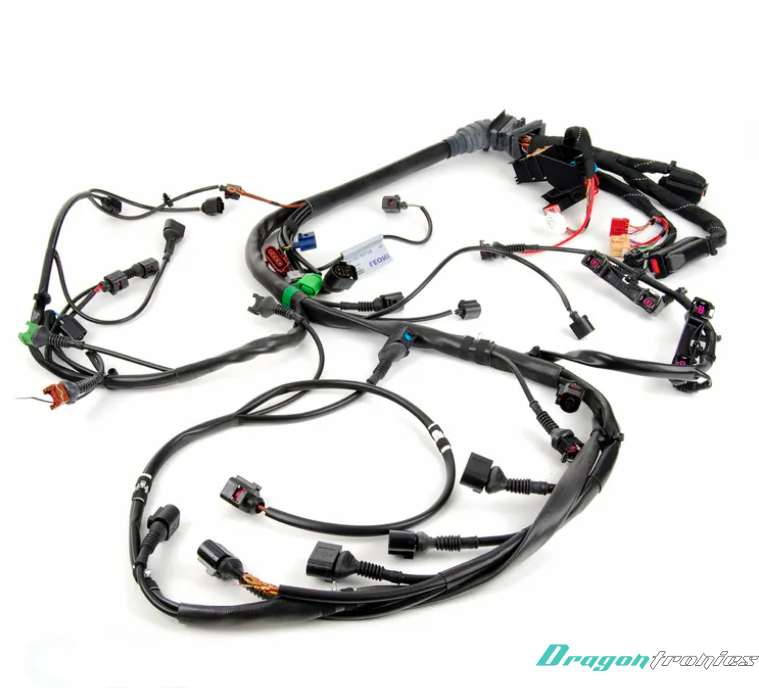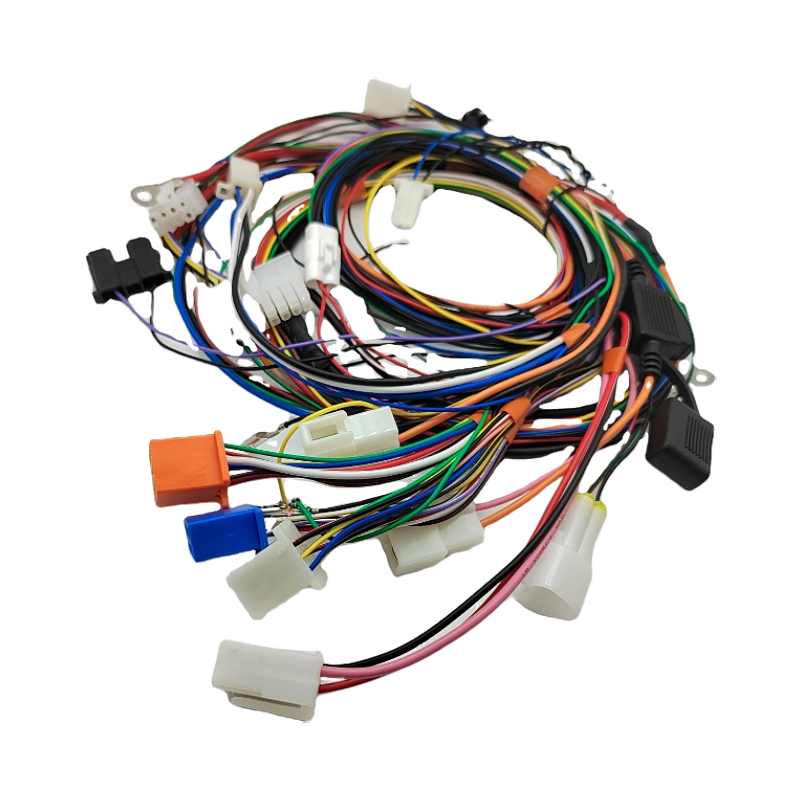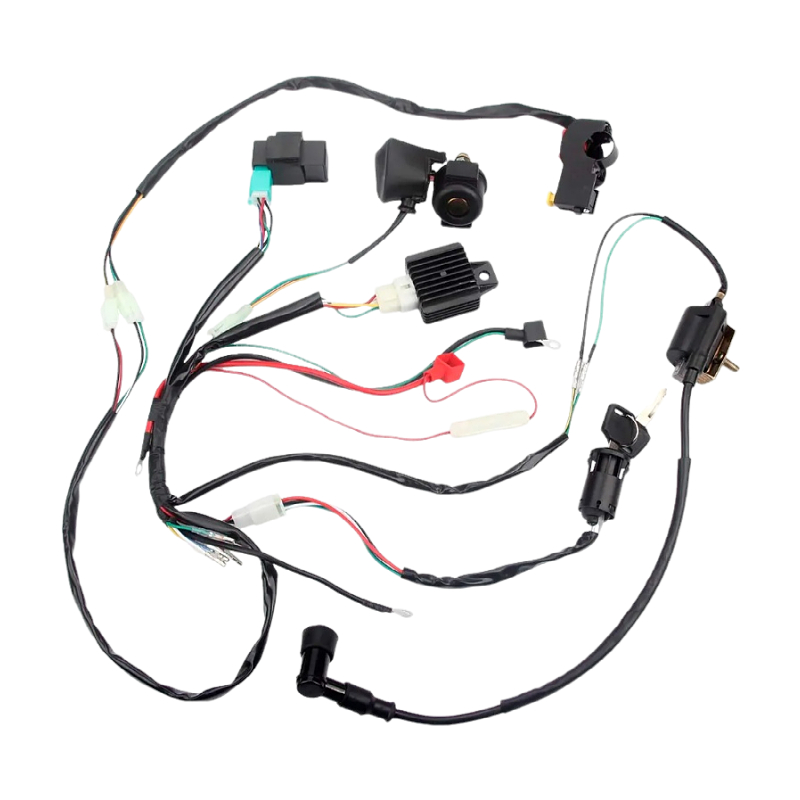Automotive Cable Assembly
Farm Vehicles Trailer RV Motorhome Car Auto Wiring Harness Automotive Wire Harness
- Product description: Farm Vehicles Trailer RV Motorhome Car Auto Wiring Harness Automotive Wire Harness
A farm vehicle wiring harness is a bundled set of electrical wires, connectors, and terminals designed specifically to carry electrical signals and power to various components on agricultural machinery or farm vehicles. These vehicles can include tractors, combine harvesters, sprayers, and other heavy-duty equipment used in farming operations.
The wiring harness allows for the safe and efficient distribution of electricity to various electrical systems within the vehicle, ensuring that everything works as intended—from the engine and lighting systems to sensors and control systems.
Key components of a farm vehicle wiring harness:
1. Wires: The primary component of the harness, these are the insulated copper (or aluminum) conductors that transmit electrical signals and power throughout the vehicle. The wires are often color-coded and arranged in specific ways to make installation and troubleshooting easier.
2. Connectors: These are the devices that join the wires together or to electrical components, such as sensors, switches, lights, or motors. In farm vehicles, connectors are designed to withstand harsh environmental conditions, including moisture, dust, and vibration.
3. Terminals: These are the metal fittings attached to the ends of wires that allow them to be securely connected to components or other parts of the vehicle.
4. Protective Sleeving or Insulation: The wires in a wiring harness are often bundled together and may be covered with a protective sleeve to guard against abrasion, chemicals, and extreme temperatures. In agriculture, where equipment is often exposed to rough conditions, this is especially important.
5. Fuses and Relays: Sometimes included in the harness to protect electrical circuits from overcurrent and to control power flow to different systems.
6. Mounting Clips and Ties: These components help keep the harness organized and securely fastened to the vehicle to prevent it from moving, fraying, or coming loose during operation.
Common applications of wiring harnesses in farm vehicles:
1. Powering and controlling the engine – Connecting the battery, ignition system, alternator, and other electrical components.
2. Lighting and indicators – Wiring for headlights, taillights, turn signals, and hazard lights.
3. Control systems – Wiring for systems like GPS, auto-steering, or precision agriculture sensors.
4. Hydraulic and pneumatic systems – Wiring for control valves and actuators.
5. Air conditioning and heating – Electrical components related to cabin climate control.
In summary, a farm vehicle wiring harness is a crucial part of agricultural machinery, helping to deliver power and signals efficiently while ensuring the vehicle’s systems operate smoothly and reliably in tough working conditions.
Categories
Latest News
Contact Us
Contact: Fiona Wu
Phone: 86 - 173 28414 818
Tel:
Add: 20, Changtian Road, Hengli, Dongguan, Guangdong, 523852, China




 Lankecms
Lankecms lankecms
lankecms
 Lankecms
Lankecms